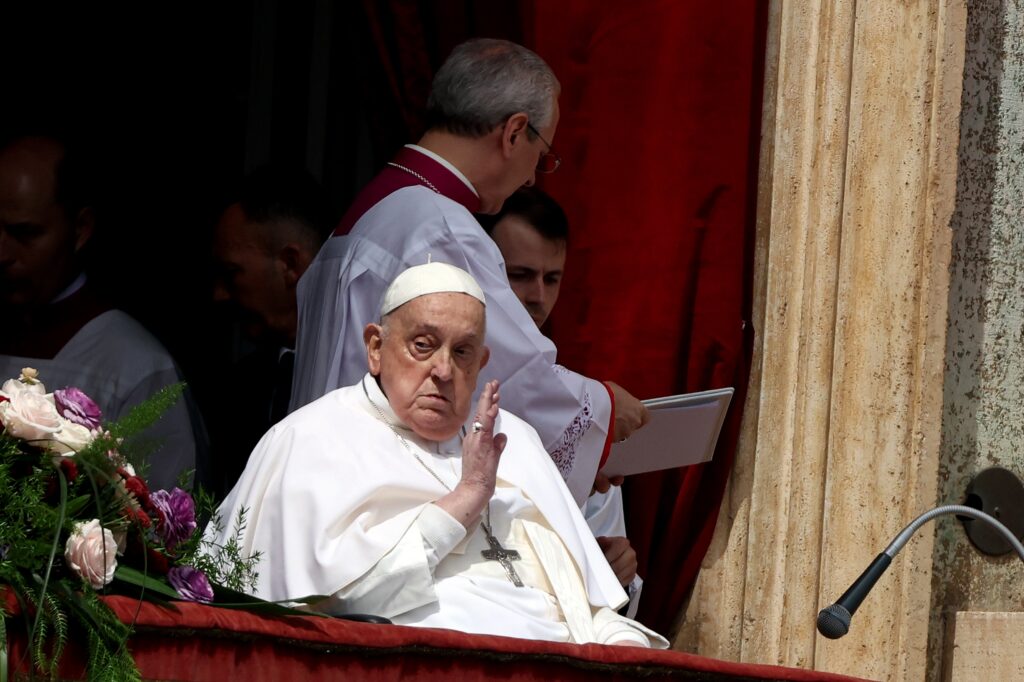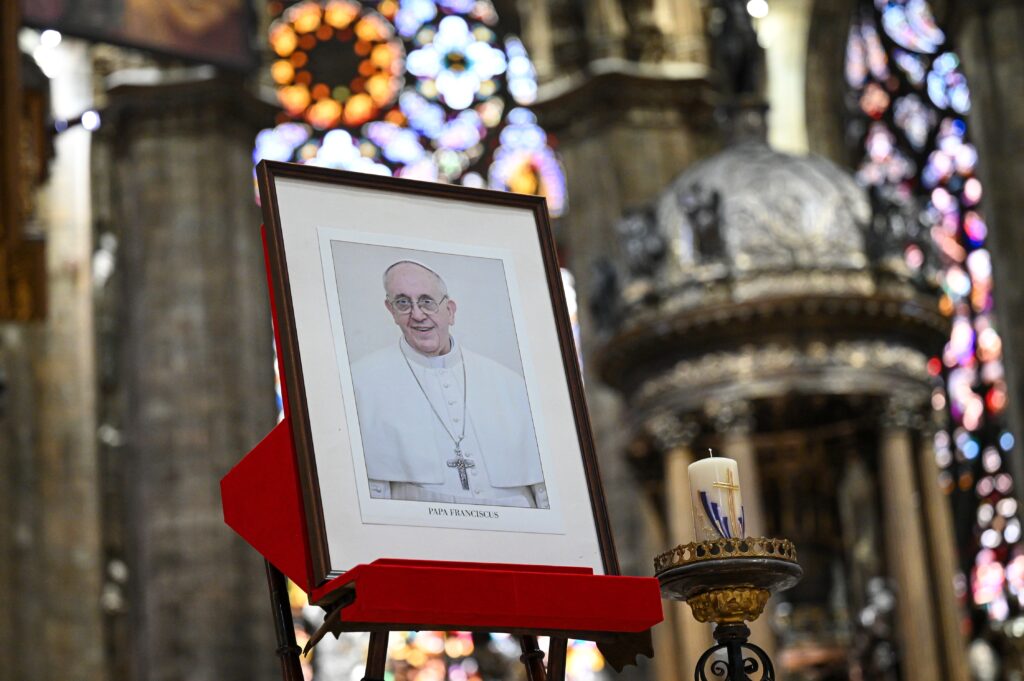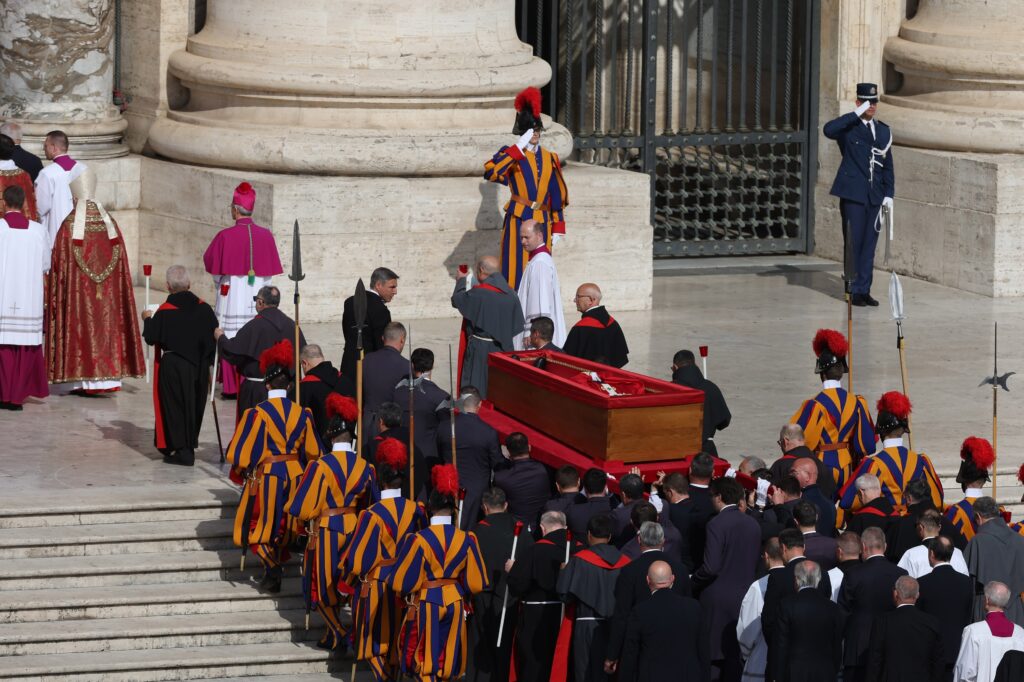A Legacy of Humility, Reform, and Compassion
 Pope Francis, born Jorge Mario Bergoglio, passed away on Easter Monday, April 21, 2025, at 7:35 a.m. in his residence at the Domus Sanctae Marthae in Vatican City. He was 88 years old. The cause of death was a stroke leading to irreversible cardiac arrest, following recent health complications including double pneumonia, hypertension, and Type 2 diabetes.
Pope Francis, born Jorge Mario Bergoglio, passed away on Easter Monday, April 21, 2025, at 7:35 a.m. in his residence at the Domus Sanctae Marthae in Vatican City. He was 88 years old. The cause of death was a stroke leading to irreversible cardiac arrest, following recent health complications including double pneumonia, hypertension, and Type 2 diabetes.
His final public appearance was on Easter Sunday, April 20, 2025, when he delivered the traditional “Urbi et Orbi” blessing from St. Peter’s Square. Despite visible frailty, he expressed gratitude for the opportunity to address the faithful.
In accordance with his wishes, Pope Francis’s body was transferred to St. Peter’s Basilica on April 23, where it lay in state in an open casket, allowing thousands of mourners to pay their respects. His funeral is scheduled for Saturday, April 26, at 10:00 a.m. in St. Peter’s Square, presided over by Cardinal Giovanni Battista Re. Following the funeral, he will be buried in the Basilica of St. Mary Major, honoring his final wish to be interred modestly in the ground.
 Pope Francis’s 12-year papacy was marked by efforts to modernize and reform the Catholic Church, emphasizing social justice, environmental advocacy, and inclusivity. He was the first Jesuit pope, the first from the Americas, and the first non-European pope since the 8th century. His leadership style was characterized by humility and a focus on the marginalized, often challenging traditional Vatican norms.
Pope Francis’s 12-year papacy was marked by efforts to modernize and reform the Catholic Church, emphasizing social justice, environmental advocacy, and inclusivity. He was the first Jesuit pope, the first from the Americas, and the first non-European pope since the 8th century. His leadership style was characterized by humility and a focus on the marginalized, often challenging traditional Vatican norms.
Global leaders and religious figures have paid tribute to Pope Francis, highlighting his moral leadership and dedication to peace and justice. His passing marks the end of a significant chapter in the Catholic Church’s history, leaving a legacy that will continue to influence future generations.
What Comes Next After the Death of Pope Francis
The death of Pope Francis marks the beginning of a new chapter in the life of the Roman Catholic Church, as a solemn and ritual-rich process begins to choose his successor. Following the days of mourning and the funeral ceremony scheduled for Saturday, April 26, attention will shift toward the convening of the conclave — the closed-door gathering of cardinals from around the world who will elect the new pope.
The Dean of the College of Cardinals, currently Cardinal Giovanni Battista Re — who will also preside over the funeral — is responsible for summoning all cardinals under the age of 80. Approximately 120 cardinal electors are expected to take part in the voting, which will be held in the Sistine Chapel. The process can last from a few days to several weeks, depending on the level of consensus among the electors.
In the interim, the Vatican enters a period known as sede vacante (the empty seat), during which all major decisions are put on hold, except for those deemed urgent and necessary. Cardinal Kevin Farrell, currently serving as Camerlengo, oversees the day-to-day operations of the Holy See and the preparations for the conclave.
All eyes will turn to Rome, with every gesture, word, and signal from the cardinals closely watched for clues about the upcoming decision. The new pope will inherit a complex legacy — one that includes ongoing reforms and global challenges to faith and authority. His name, his symbolic first actions, and his tone will all shape the direction of the Church in the years ahead.
